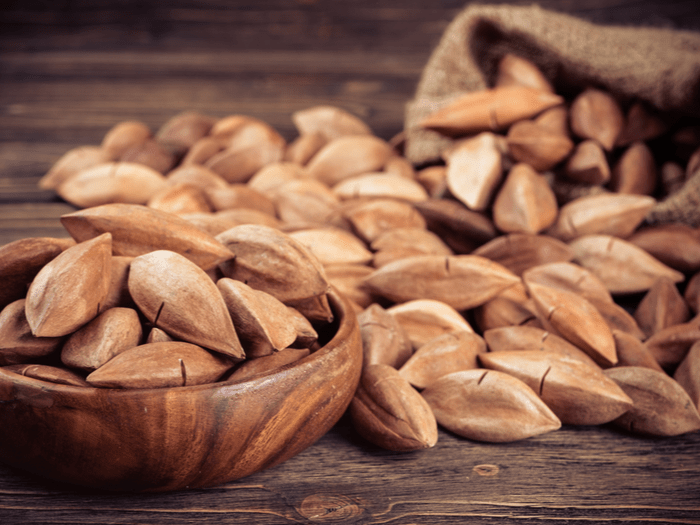
[ad_1]
Nutrition Diva listener Alex writes:
“Can you do an episode on the pili nut? I’d never seen or heard of it before but all of a sudden it’s popping up in my social media feeds. Supposedly, it’s super nutritious but I feel like we’ve been down this road before. What’s the real deal?”
Isn’t amazing in this era of global everything that there are still so many foods that you’ve never heard of? And Alex is right, the pili nut is having a moment. In the already crowded nut space, pili nut vendors are trying to carve out a niche for this little-known nut. So, of course, it was only a matter of time before the “superfood” label would be invoked.
An internet search for “health benefits of pili nuts” will quickly yield a list of impressive claims:
- fights inflammation
- reduces cholesterol
- neutralizes free radicals
- strengthens bones
- helps you sleep
- enhances cognitive function
The first thing you need to know is that none of these claims are based on human research that’s specifically on the pili nut. To my knowledge, there is no research linking pili nuts to specific health outcomes in humans – with the exception of a single study reporting an allergic reaction. In fact, there are only 6 papers mentioning pili nuts in the entire Pubmed database, and all but one of them were published since 2017!
If you have a tree nut allergy, exercise caution with pili nuts.
All of the health claims that you’ll see for pili nuts, if they are based on anything at all, are based on their nutritional content. For example, calcium has been found to strengthen bones and pili nuts contain calcium. Therefore, pili nuts must strengthen your bones. (Although it’s worth noting that an ounce of pili nuts provides only 4% of your daily calcium needs.)
So, if the nutrient content is the sole basis for these health claims, how do pili nuts stack up nutritionally to other nuts? Are they higher or lower in specific nutrients?
Are pili nuts nutritious?
Most nuts are high in fat, which mean that they provide a lot of calories in a relatively small package. But pili nuts are even higher in fat (and calories) than most other nuts, with the exception of macadamia. Unlike macadamia nuts, however, which are mostly monounsaturated fats, the pili is about half saturated and half monounsaturated fat. Although you may run into claims to the contrary online, the pili nut is not a good source of omega-3 fats.
Pili nuts contain less protein per serving than most other common nuts – about three grams per serving.
Most nuts are pretty low in carbohydrates, but pili nuts contain virtually no carbohydrate whatsoever, which has made them popular with the ketogenic dieters. However, this means that they are also lower in fiber than other nuts.
Pili nuts contain less protein per serving than most other common nuts – about 3 grams per serving.
Pili nuts are relatively rich in vitamin E, with about 40% more vitamin E than almonds. They are also widely touted as being higher in magnesium than any other nut and this is technically true, but only barely. Cashew nuts offer 98% as much magnesium as the pili nut. Almonds are also relatively high in magnesium.
Click here to see a comparison of the nutritional content of pili nuts with other nuts.
Other reasons to like pili nuts
One other reason to like pili nuts is their low environmental impact. At present, the worldwide pili nut supply comes primarily from the Philippines, where they are harvested wild from their natural forest habitat. All tree nuts need a lot of water. But instead of requiring irrigation, pili nuts rely only on natural rainfall. And unlike nuts that are commercially cultivated, no fertilizers or pesticides are used.
So far, anyway. If the pili nut catches on, we might see more commercial cultivation to meet growing demand, and that may change the equation. But for the time being, pili nuts appear to offer nut lovers a more eco-friendly option.
Does Growing Almonds Really Waste Too Much Water?
What do pili nuts taste like?
The very high fat content give pili nuts a moist, buttery texture similar to macademia nuts. You can eat them raw but roasting them brings out a decadent flavor and texture that’s been described as “plant-based foie gras.” There are also pili-based nut butters and at least one plant-based milk option. If you can’t find them in your local retail stores, you can easily order pili nut products online.
[ad_2]
Source link
